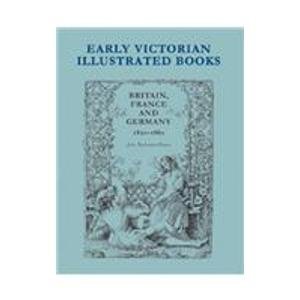Articoli correlati a Early Victorian Illustrated Books, Britain, France...
Early Victorian Illustrated Books, Britain, France And Germany 1820-1860: Britian, France And Germany 1820-1860 - Rilegato

First edition. Due in November 2005. Writing over fifty years ago, the bibliographer Percy Muir noted that the 'immediate post-Bewick period' had been 'unduly neglected,' and this is still true today. In this major new study, John Buchanan-Brown remedies this neglect and demonstrates the importance of the period from 1820 to 1860 in the history of the illustrated book. These years saw the establishment of the technique of end-grain wood-engraving as the dominant mediuum of graphic reproduction. Its great advantage was that, as a relief process, it could reproduce both the image and the text simultaneously, and this allowed the publishing industry to feed what had become an insatiable appetite for illustrated books and journals. Although end-grain engraving was an English phenomenon, it was the French who first applied the process to book design. In turn, German illustrators were to influence the style of British illustrators. Thus wood-engraving naturally plays a leading role in this study, but it does not overshadow the other means of graphic reproduction employed during this period: lithography, chromolithography, and steel-engraving and etching. The study illustrates the work of French and German artists and their influence upon their British counterparts. The pioneering study also includes appendices on aspects of wood- and steel-engraving in England, notes on French and German illustrators and a glossary of technical terms. It is illustrated by some 250 reproductions in black and white, and eight pages in color. Co-published
Le informazioni nella sezione "Riassunto" possono far riferimento a edizioni diverse di questo titolo.
Product Description:
Book by BuchananBrown John
Le informazioni nella sezione "Su questo libro" possono far riferimento a edizioni diverse di questo titolo.
- EditoreBritish Library Board
- Data di pubblicazione2005
- ISBN 10 1584561696
- ISBN 13 9781584561699
- RilegaturaCopertina rigida
- Numero di pagine320
Compra nuovo
Scopri di più su questo articolo
EUR 29,37
Spese di spedizione:
EUR 3,74
In U.S.A.
I migliori risultati di ricerca su AbeBooks
Early Victorian Illustrated Books: Britain, France, & Germany, 1820-1860.
Editore:
British Library/Oak Knoll.
(2005)
ISBN 10: 1584561696
ISBN 13: 9781584561699
Nuovo
Rilegato
Quantità: 3
Da:
Valutazione libreria
Descrizione libro Condizione: New. Fine. Cloth, D-j. 2005. Originally published at $98.00. Codice articolo W74090b
Compra nuovo
EUR 29,37
Convertire valuta
Early Victorian Illustrated Books, Britain, France And Germany 1820-1860: Britian, France And Germany 1820-1860
Editore:
British Library Board
(2005)
ISBN 10: 1584561696
ISBN 13: 9781584561699
Nuovo
Rilegato
Quantità: 1
Da:
Valutazione libreria
Descrizione libro Condizione: New. . Codice articolo 52GZZZ010DH7_ns
Compra nuovo
EUR 68,08
Convertire valuta

